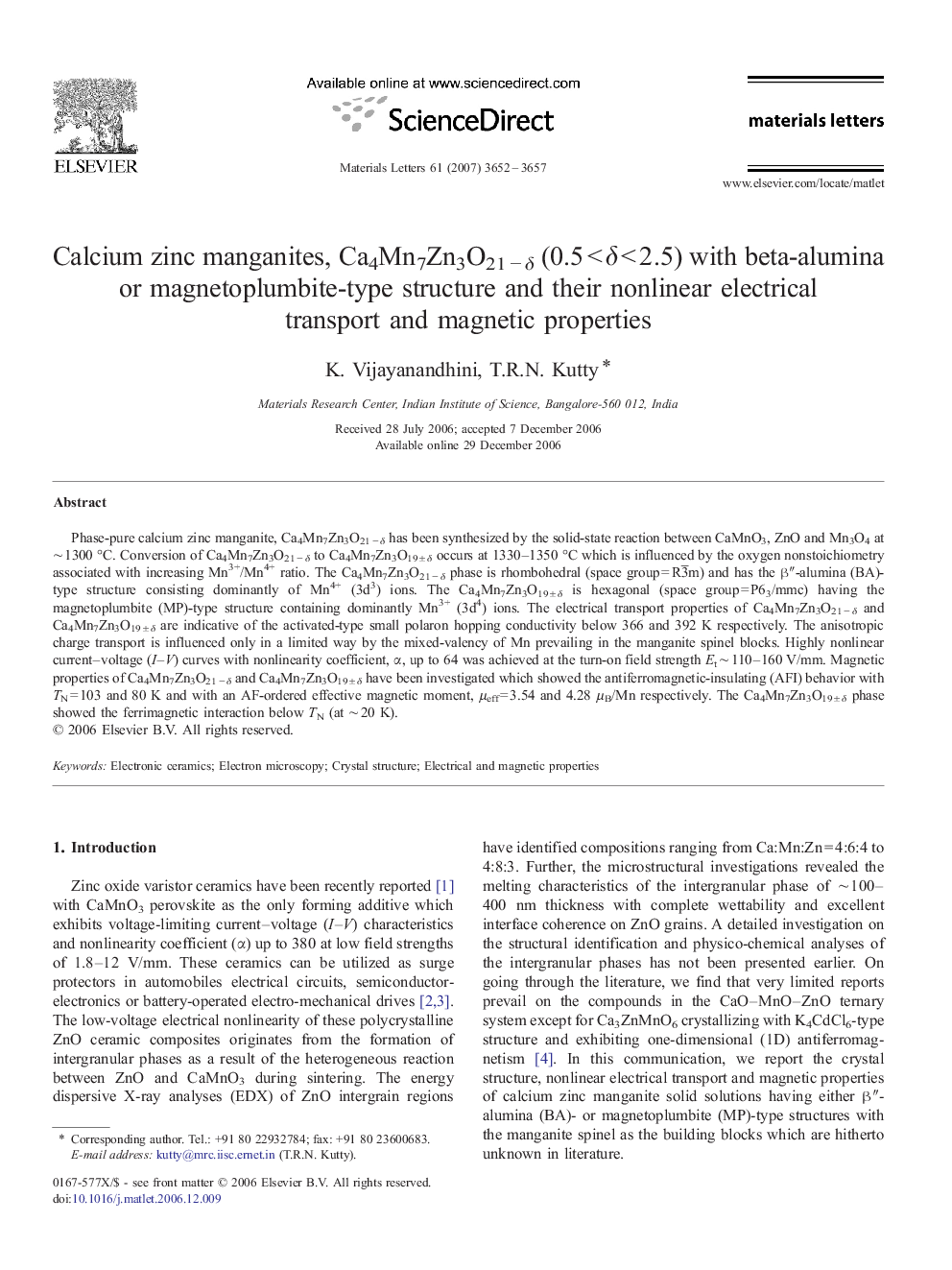| Article ID | Journal | Published Year | Pages | File Type |
|---|---|---|---|---|
| 1652997 | Materials Letters | 2007 | 6 Pages |
Phase-pure calcium zinc manganite, Ca4Mn7Zn3O21 − δ has been synthesized by the solid-state reaction between CaMnO3, ZnO and Mn3O4 at ∼ 1300 °C. Conversion of Ca4Mn7Zn3O21 − δ to Ca4Mn7Zn3O19 ± δ occurs at 1330–1350 °C which is influenced by the oxygen nonstoichiometry associated with increasing Mn3+/Mn4+ ratio. The Ca4Mn7Zn3O21 − δ phase is rhombohedral (space group = R3¯m) and has the β″-alumina (BA)-type structure consisting dominantly of Mn4+ (3d3) ions. The Ca4Mn7Zn3O19 ± δ is hexagonal (space group = P63/mmc) having the magnetoplumbite (MP)-type structure containing dominantly Mn3+ (3d4) ions. The electrical transport properties of Ca4Mn7Zn3O21 − δ and Ca4Mn7Zn3O19 ± δ are indicative of the activated-type small polaron hopping conductivity below 366 and 392 K respectively. The anisotropic charge transport is influenced only in a limited way by the mixed-valency of Mn prevailing in the manganite spinel blocks. Highly nonlinear current–voltage (I–V) curves with nonlinearity coefficient, α, up to 64 was achieved at the turn-on field strength Et ∼ 110–160 V/mm. Magnetic properties of Ca4Mn7Zn3O21 − δ and Ca4Mn7Zn3O19 ± δ have been investigated which showed the antiferromagnetic-insulating (AFI) behavior with TN = 103 and 80 K and with an AF-ordered effective magnetic moment, μeff = 3.54 and 4.28 μB/Mn respectively. The Ca4Mn7Zn3O19 ± δ phase showed the ferrimagnetic interaction below TN (at ∼ 20 K).
